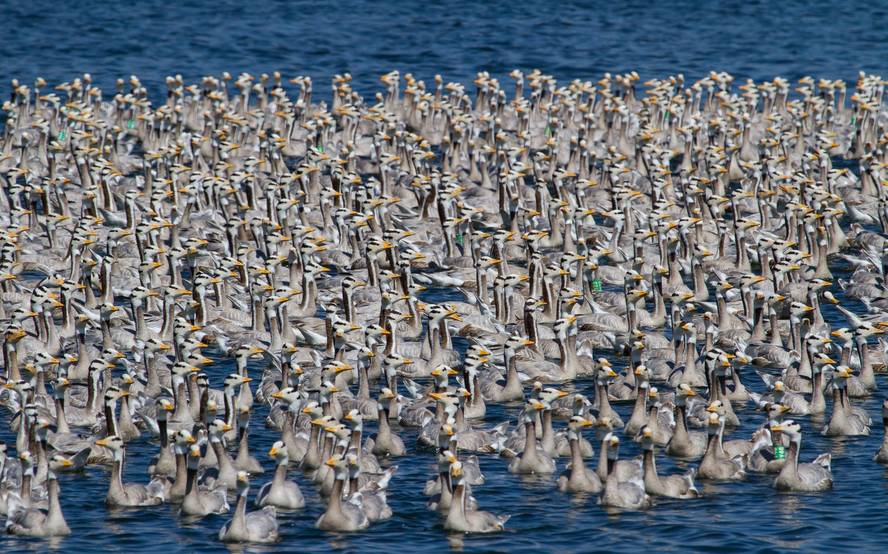The geese cross the Himalayas glued to the relief

Indian geese migrate from Mongolia to the southeast of Tibet or to India in autumn by the Himalayas, and historically it has been believed that they were going to travel parallel to the planes, maintaining the height and taking advantage, if possible, of the subsequent wind. However, the data show that the crossing is linked to orography.
The research has been carried out using devices incorporated into seven migratory geese, which have been published in the journal Science. The devices placed on the geese have measured four parameters: heart rate, abdominal temperature and pressure to be able to determine the altitude, as well as body movements to calculate the frequency of winging.
On the one hand, the data collected revealed that the geese travelled at an average height of 4,700 meters, exceeding 4,800 meters 2.3% of the flight time. On the other hand, they have shown that the geese agitate the wings more frequently as the altitude increases in order to progress through a finer air, and that the heart rate increases exponentially by moving the wings faster.
With this data, researchers have developed two models to calculate the energy spent on flights. According to these models, the energy cost of the flight increases faster than expected as the air density decreases: “For birds it is energetically more efficient to travel in search of higher density air, going down to smaller altitudes,” the study’s managers say, even though this requires from time to time an effort to reach higher heights. “With this strategy, Indian geese have found a way to cross the highest area of the Earth, without carrying their physiological capabilities to the extreme,” they added.





